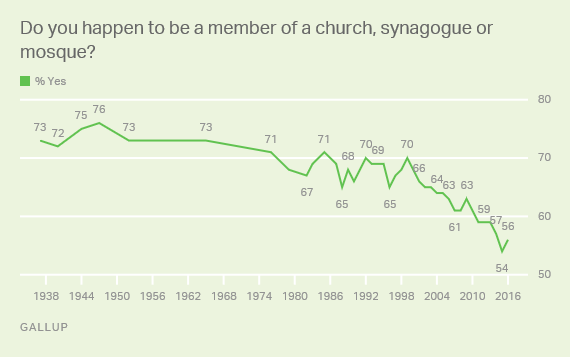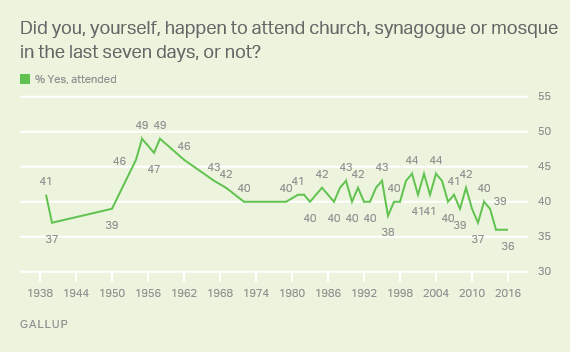The trend away from formal religion continues. The most significant trend in Americans’ religiosity in recent decades has been the growing shift away from formal or official religion. About one in five U.S. adults (21%) don’t have a formal religious identity. This represents a major change from the late 1940s and 1950s when only 2% to 3% of Americans did not report a formal religious identity when asked about it in Gallup surveys. The increase in those claiming no religious identity began in the 1970s, with the percentage crossing the 10% threshold in 1990 and climbing into the teens in the 2000s.
Americans are also significantly less likely now than they were in the past to claim membership in a church, synagogue or mosque. In 1937, when Gallup first asked about church membership, 73% said they were a member of a church. This figure dropped into the upper 60% range in the 1980s and continued to decrease from that point on. It fell to its lowest point of 54% in 2015 but increased slightly to 56% this year.
Self-reported church attendance is also lower than it has been in past decades — although perhaps not as low as might be expected, given the drop in church membership and the increase in the percentage of those with no religious identity.
Gallup’s longest-running religious service attendance question asks, “Did you, yourself, happen to attend church, synagogue or mosque in the last seven days, or not?” In 1939, when Gallup first asked this question, 41% said “yes.” That percentage dropped to 37% in 1940 and rose to 39% in 1950. It continued to climb, reaching as high as 49% at multiple points in the 1950s. Attendance then settled down to figures around 40% for decades, before dropping to 36% for the past three years.
Via Gallup

